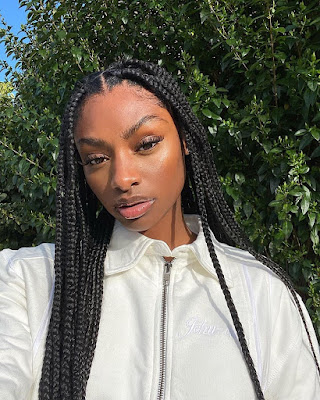What's the Difference Between Russian Hair and Indian Hair?
 |
| Sleek Straight Hair |
Hair
extensions are a popular way to add length, volume, or a tinge of luxury to
your mane. But with a variety of options available, choosing the right type can
be overwhelming. Two of the most sought-after types are Russian hair and Indian hair. Both offer distinct advantages but also have their share of
considerations. This blog delves into the fundamental discrepancies between
Russian and Indian hair extensions, helping you make an informed finding for
your next hair transformation.
Origin and Processing
- Russian Hair: Traditionally, Russian hair comes from donors in Eastern
Europe and surrounding regions. It's known for being naturally lighter in
shades, ranging from blondes to light browns. Due to stricter regulations
and a smaller donor pool, genuine Russian hair can be more expensive.
Additionally, minimal processing is involved to maintain its natural
quality.
- Indian Hair: Sourced primarily from temples in India where hair is
donated as a religious offering, Indian hair comes in a wider range of
natural colors, predominantly black and dark browns. However, to cater to
various consumer demands, Indian hair often undergoes significant chemical
processing to achieve lighter shades or different textures.
Texture and Quality
- Russian Hair: Prized for its luxurious quality, Russian hair is known
for being exceptionally fine, soft, and smooth. This delicate texture
blends seamlessly with most hair types, particularly fine or thin hair,
creating a natural and undetectable result. Due to minimal processing,
Russian hair tends to be stronger and more durable, lasting longer with
proper care.
- Indian Hair: Indian hair has a wider range of textures, varying from silky
straight to wavy or even coarse. This versatility makes it suitable for a
broader range of hair types. However, the processing used to lighten
Indian hair can sometimes affect its texture, making it slightly coarser
or less manageable.
Coloring and Lifespan
- Russian Hair: Due to its naturally lighter color base, Russian hair
requires minimal processing for lightening, maintaining its integrity and
minimizing damage. This translates to healthier-looking
extensions that can be styled with heat more readily. However, the limited
availability of lighter shades can be a drawback for some.
- Indian Hair: Indian hair, naturally dark, often undergoes
significant chemical processing to achieve lighter
shades. This can affect the hair's texture and lifespan. While
some high-quality Indian hair extensions can handle heat styling, they may
require extra care and may not last as long as minimally processed Russian
hair.
Ethical Considerations
The ethical
sourcing of hair extensions is a growing concern. When considering Russian or
Indian hair, it's crucial to choose reputable vendors who prioritize ethical
practices. Look for companies that ensure fair compensation for hair donors and
transparent sourcing methods.
Cost
- Russian Hair: Due to its limited availability and minimal processing,
Russian hair extensions tend to be more expensive than Indian hair.
- Indian Hair: With a wider range of qualities and processing levels,
Indian hair extensions can vary in cost depending on the specific grade
and brand. Generally, they are a more affordable choice compared
to Russian hair.
Choosing the Right Hair for You
Ultimately,
the best choice between Russian and Indian hair extensions depends on your
individual needs and priorities. Consider the following factors:
- Hair type and desired outcome: If you have thin straight hair and prioritize a natural,
seamless blend, Russian hair might be the better choice. Indian hair, with
its wider range of textures, may be more suitable for those with thicker
or coarser hair.
- Budget: Russian
hair is generally more expensive due to its rarity and minimal processing.
Indian hair offers a wider budget range.
- Color preference: If you have lighter hair or desire blonde tones, Russian hair
might be a better fit with minimal processing needed. Indian hair offers a
wider range of natural dark colors but may require significant processing
for lighter shades.
- Ethical sourcing: Choose a reputable vendor who prioritizes ethical practices
in hair collection and compensation for donors.
Conclusion:
While
"Russian hair" and "Indian hair" are commonly used terms,
it's important to remember that the quality and processing of hair extensions
can vary greatly within each category. Focus on finding a reputable vendor who
prioritizes ethical sourcing and high-quality hair, regardless of the origin.
By considering your hair type, desired outcome, and budget, you can choose the
best hair extensions to achieve your dream look with confidence.








Comments
Post a Comment